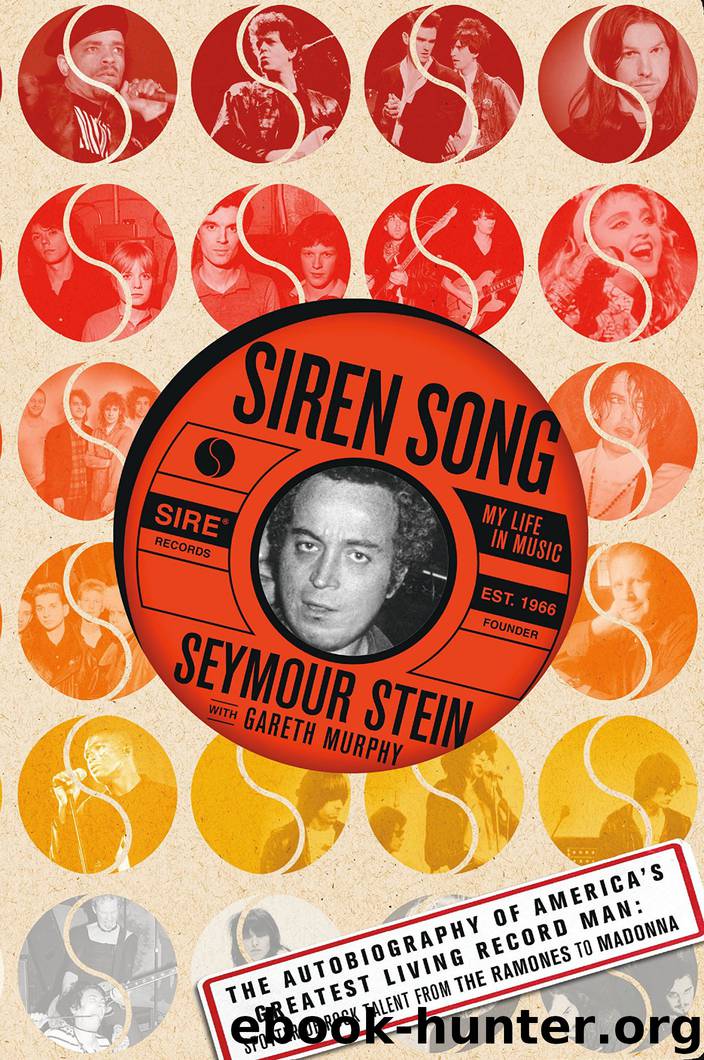Siren Song_My Life in Music by Gareth Murphy

Author:Gareth Murphy
Language: eng
Format: epub
Tags: music, Business, Biography, history
Publisher: St. Martin's Press
Published: 2018-06-12T00:00:00+00:00
6. THIS AIN’T NO PARTY
There’s a song for every chapter in your life, and for Linda, our break up was Gloria Gaynor’s “I Will Survive,” which she played over and over like it had been personally written from her to me. Thing was, that whole party scene would not survive.
According to music business mythology, Disco Demolition Night supposedly signed disco’s death certificate. It was an event in Chicago in the summer of 1979 organized by a pair of rock radio jocks who hated disco so much, they invited baseball fans to burn disco records before a White Sox game against the Detroit Tigers. Thousands converged on the stadium and sparked a bonfire of the vanities that degenerated into a riot.
* * *
As much as I love a good story, this was a minor news item that has since been parodied and exaggerated out of all proportion. Since when did the record business ever care about Christian rockers in the Midwest? I mean seriously, apart from selling them our AOR dreck? Remember in the midsixties when John Lennon said the Beatles were bigger than Jesus Christ? Far greater numbers started burning Beatles records in bizarre scenes all over the country. It never stopped the Beatles selling records by the shipload. If anything, it strengthened their image.
Disco died and was reincarnated exactly where it was born: in the clubs of New York City. Studio 54 was where the record moguls, the disco stars, and Billboard’s chart fixer Bill Wardlow hung out. So, the party was over, literally, when the cops raided Studio 54 in December 1978 and nailed its owners on tax evasion. You had to feel very sorry for Steve Rubell and Ian Schrager actually winding up in jail. I can only presume they’d refused entry to a mayor’s wife or a police chief’s mistress.
It probably wouldn’t have mattered anyway, because by then, the Jerry Halls were sick of standing out in the cold trying to fight their way in. The rock star brigade had already migrated to Trax, a rockier joint on Seventy-Second Street and Columbus Avenue. Meanwhile, all the creative energy was heating up downtown, where the younger art crowd lived. CBGB was still going strong, and I remained loyal to the end, but of the new places, the place I loved most was the Mudd Club, opened in 1978 on White Street in Tribeca. It was a bar with a stage for bands, a deejay room upstairs for parties, and a gallery area for exhibitions. For a while, the Mudd Club was the place where you’d bump into the likes of Andy Warhol, Allen Ginsberg, Klaus Nomi, Lou Reed, David Bowie, and various other superheroes of the artistic world.
On 36 West Sixty-Second Street, there was also Hurrah, which had opened in 1976 and was the first to use giant video screens, way ahead of MTV. The biggest new place, however, was Danceteria on Thirty-Eighth Street, which had three floors—one for live gigs, a big dance floor, and a top floor for exhibitions and performance art.
Download
This site does not store any files on its server. We only index and link to content provided by other sites. Please contact the content providers to delete copyright contents if any and email us, we'll remove relevant links or contents immediately.
Still Foolin’ ’Em by Billy Crystal(36259)
We're Going to Need More Wine by Gabrielle Union(18951)
Plagued by Fire by Paul Hendrickson(17314)
Pimp by Iceberg Slim(14325)
Molly's Game by Molly Bloom(14049)
Becoming by Michelle Obama(9912)
When Breath Becomes Air by Paul Kalanithi(8297)
Educated by Tara Westover(7919)
The Girl Without a Voice by Casey Watson(7802)
Note to Self by Connor Franta(7606)
The Incest Diary by Anonymous(7540)
How to Be a Bawse: A Guide to Conquering Life by Lilly Singh(7364)
The Space Between by Michelle L. Teichman(6840)
What Does This Button Do? by Bruce Dickinson(6124)
Imperfect by Sanjay Manjrekar(5778)
Permanent Record by Edward Snowden(5719)
A Year in the Merde by Stephen Clarke(5297)
Shoe Dog by Phil Knight(5110)
Promise Me, Dad by Joe Biden(5077)
